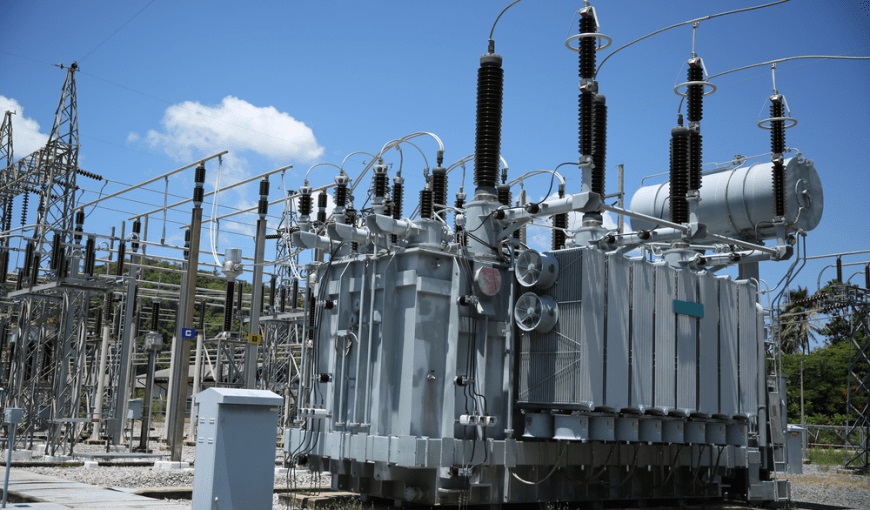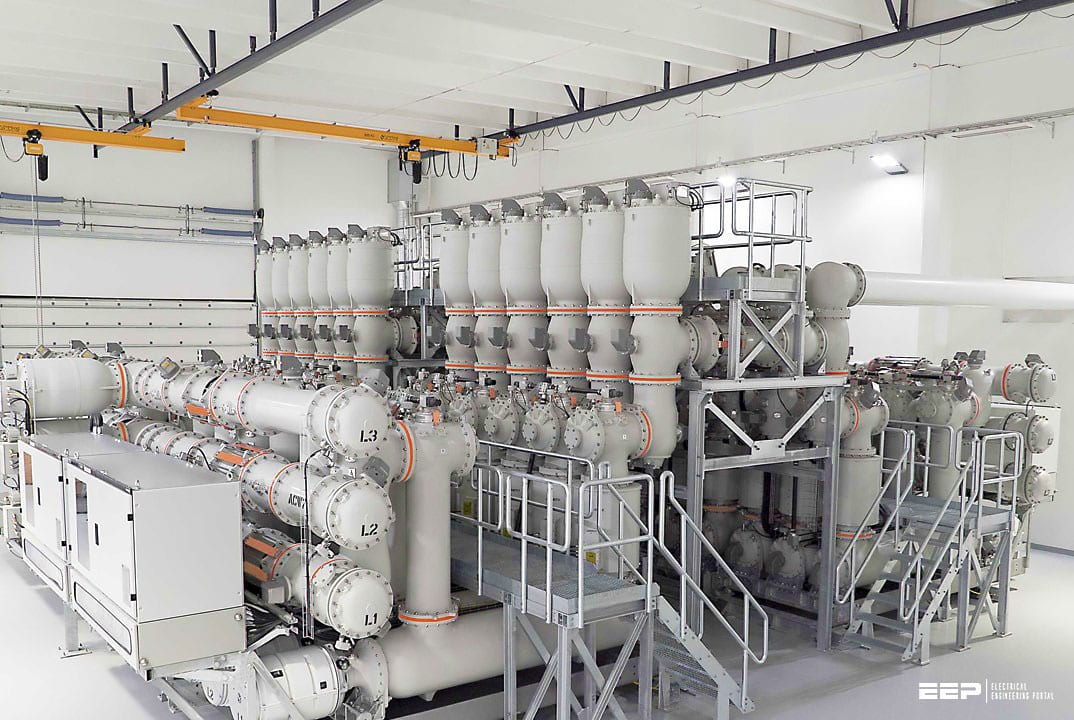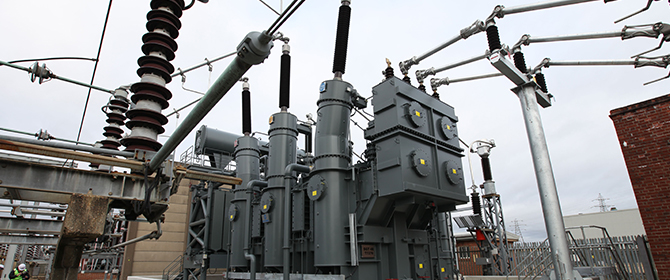 The standardization of technical specification of transformers incorporating the best practices and latest technological developments and future trend is the need of hour to ensure quality, reliability and to have uniform practice across the utilities in the country, notes S. K. Ray Mohapatra, Chief Engineer & Senior Member IEEE, Central Electricity Authority, Ministry of Power, Government of India.
The standardization of technical specification of transformers incorporating the best practices and latest technological developments and future trend is the need of hour to ensure quality, reliability and to have uniform practice across the utilities in the country, notes S. K. Ray Mohapatra, Chief Engineer & Senior Member IEEE, Central Electricity Authority, Ministry of Power, Government of India.
The phenomenal growth of the Indian power transmission system has resulted in the formation of one of the single-largest synchronous grids (One Nation One Grid) in the world, with highest transmission system voltage of 765kV AC and ±800kV HVDC. The present transmission network of about 4.3 lakh ckm of 220kV and above voltage level including HVDC, spread across the country, forms the backbone of the Indian power transmission network.
The present transformation capacity in substations (220kV and above voltage levels) is about 1000GVA and is expected to increase to about 1105GVA by the end of current plan period ending FY22. Thereafter, an addition of about 60-70GVA transformation capacity in substations/switchyards is expected every year. In future, the transmission system is likely to be planned based on General Network Access (GNA) concept, which will increase redundancy level, increase transformation capacity/compensation requirement and reduce the congestion in the network resulting in smooth flow of power without constraint.
The complexity of the Indian power system has increased manifold over the years. With operation of multiple agencies in power sector, high availability and reliable operation assumes tremendous importance in the present scenario.
The complexity of the Indian power system has increased manifold over the years. With operation of multiple agencies (state utilities, Central utilities, and private players) in power sector, high availability and reliable operation assumes tremendous importance in the present scenario. The smooth, reliable, safe operation of one of the largest single synchronous grid is a herculean task for system operators. The expansion of transmission system matching with installed generation capacity has resulted in increase in fault level, over-voltage due to generation of reactive VAR, reverse flow of power and decrease in fault level in renewable energy-rich areas (due to synthetic inertia) and impact on resilience of the system during day time (due to reduction in thermal generation having inherent higher inertia) due to large scale integration of renewable generation, Very Fast Transient (VFT) over-voltage due to increase in gas insulated switchgear (GIS) installations even at 765kV level. The transmission assets have to operate in such stressful environment during their service life. Manufacturers have to take into account all these factors while designing their equipment to ensure long and trouble-free service.

In such a scenario, the major assets of a power system would play an important role not only in terms of investment but also in terms of availability and reliability of the system.
The transformer is the most efficient, expensive static equipment and is a vital asset in power delivery chain starting from generation up to ultimate consumption. Quality, reliability and availability of such important assets would play crucial role in achieving the ultimate objective of delivery of uninterrupted (24×7) quality power to all consumers at affordable rate and for smooth operation of the power system.
The transformer is the most efficient, expensive static equipment and is a vital asset in power delivery chain starting from generation up to ultimate consumption.
Emphasis needs to be laid on improved design, quality control during manufacturing, use of right components/accessories, maintenance and safety during operation of such vital assets. Generally, due to poor quality of raw material, workmanship, manufacturing techniques or due to normal and abnormal stress of the system during the operation (like frequent system faults, over loading, environmental effect, unexpected continuous operating voltage and over-voltage stresses), and poor maintenance practice, transformers/reactors fail much before their expected life span of about 35 years. The failure of such vital equipment can have a significant economic impact due to high cost, long lead time in procurement, manufacturing and installation. A failed transformer usually takes a few weeks to replace, if spare is available, or months to a year for major repair or to build/procure a new unit.

There are over 600 transformer manufacturers in India out of which about 35 are manufacturers of transformers of 66kV and above voltage class. There are nine manufacturers that have the capability and facilities to manufacture transformers and reactors up to 765kV class.
The estimated manufacturing capacity of transformers and reactors in India is about 500GVA per annum including distribution class transformer (power transformer about 325GVA per annum and distribution transformer about 175GVA per annum).
Central Electricity Authority (CEA) is in the process of finalization of document for standardization of specification for transformers and reactors (66kV and above voltage class) in consultation with all stakeholders including state and public sector power utilities and manufacturers.
Standardization of ratings of transformer/reactor at different voltage levels, fixation of component losses for transformers (No load loss, I2R loss, load loss and auxiliary loss), provision of tertiary and On Load Tap Changer (OLTC) (Conventional & Vacuum type), use of type of bushings [Resin Impregnated Paper (RIP) / Resin Impregnated Synthetic (RIS) bushings / Oil Impregnated Paper (OIP) bushings], Standardization of various technical parameters like Basic Insulation Level (BIL) for winding and bushings, temperature rise, Impedances, tap range and steps and location of taps, oil parameters etc., Digitalization of Remote Tap Changer Control (RTCC) & integration with Bay Control Unit (BCU),improvement in basic Manufacturing facility at manufacturer’s works, Roles and responsibilities of utility & manufacturer, Condition assessment / monitoring aspect, different diagnostic methods / tests to assess the health of transformer & reactor and planning of run, refurbish and replacement are some of the key issues addressed in the document.
The standardization of technical specification of transformers incorporating the best practices and latest technological developments and future trend is the need of hour.
Both manufacturers and customer/purchaser of transformers have an important role to play in trouble-free service during its “Specified Design Life”. The design, workmanship, the quality of material used and the manufacturing environment (a clean dust-free environment with humidity control) are equally very important to ensure quality and reliability of transformer. Good maintenance practice and regular monitoring of health of assets is also important. Successful operation of transformer depends on operating conditions and O&M practices being followed by the utility. Proper condition assessment / monitoring and maintenance of transformer/reactor need to be carried out effectively for a long trouble-free service life.

The first 765kV transformer in India, installed in 2007, has already completed more than a decade of service life and good population of 400kV class transformer have crossed 20 years of service life. It is high time for utilities to estimate/assess the residual life of population of transformers in operation at various voltage levels. This would help utilities in making optimum use of transformers and also taking timely decision regarding Run-Refurbish-Replacement of transformers. For oil-filled transformers, which have already served more than 15-20 years, it is advisable to estimate the residual life by assessing the extent of degradation of solid cellulosic paper insulation through Furan content (2Furfuraldehyde) analysis of oil and degree of polymerization (DP) of paper insulation. The document also covers condition monitoring, and key issues relating to transportation, erection, testing and commissioning measures to stop leakage of oil.
The standardization of technical specification of transformers incorporating the best practices and latest technological developments and future trend is the need of hour to ensure quality, reliability and to have uniform practice across the utilities in the country. There may be financial implication on the overall cost of transformer or reactor due to standardization of certain technical parameters, fixation of losses, inclusion of certain specific construction features and use of specific component and material etc. However, if the overall life cycle cost (LCC) is taken into consideration, the benefit will ultimately outweigh the initial increase in cost. The goal of “One Nation One Specification” would always be in the overall interest of the power system of the country.
About the author: S. K. Ray Mohapatra is Chief Engineer & Senior Member IEEE, Central Electricity Authority, Ministry of Power, Government of India.
(All photographs are for illustration only)


